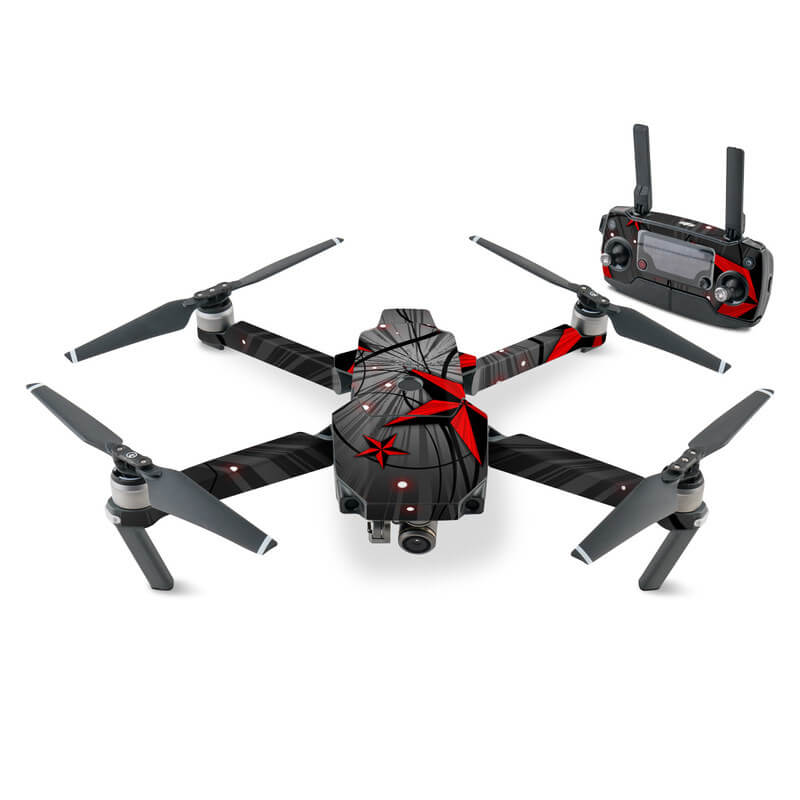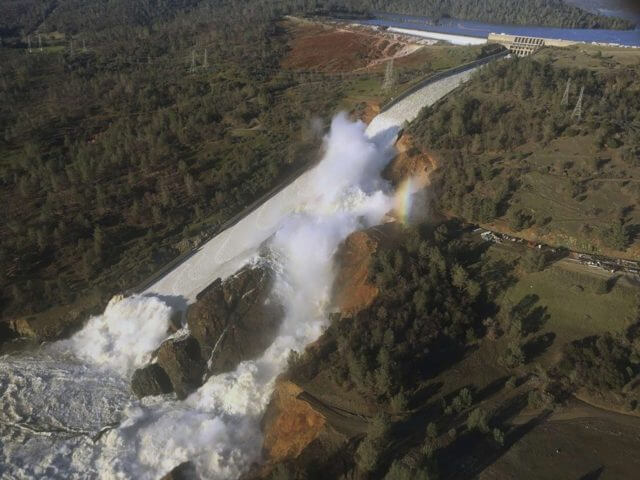We live in a world of ‘functional obsolescence’. Whether it’s the product cycles of manufacturers or the pace of technological advances, this is no more prevalent than in the consumer side of video editing on laptops.
I remember years ago when I bought my first GoPro action camera (a HERO3+ black). At the time I was using a chunky HP laptop for business and I was unaware of the video processing requirements. After our first weekend with the kids filming mountain biking adventures, we returned home, excited to process and watch the video. It took a grand total of about 2 minutes for me to realize that I had barely enough overall processing power to edit my video. Transfers rates were slow, playback during editing was super choppy, and what should have taken minutes actually took hours to accomplish.
Nothing stings like the pain of buying an action camera or drone with tech demands well above your existing hardware.
Fast forward a few years, and that pace of change has only only increased, but thankfully prices continue to come down.
So what are the best laptop computers for 4K video editing? What laptop features are the ‘must have’ minimums and what extras are ‘nice to have’?
Two of the leaders in 4K video capture are GoPro and drone maker DJI, makers of the Phantom and Mavic consumer drones, so take into consideration their minimum requirements for your video processing hardware.
Be Warned
Before you even start to shoot or process video in 4K there’s one thing you must understand right from the start. Shooting and processing 4K video requires such immense processing power both from your computer as well as your monitor that you can’t go halfway.
Those Dreaded 3 Words For PC Owners
While the gadgets of the past came with ‘some assembly required’ or ‘ batteries not included’ warnings, those are all trumped by today’s granddaddy of them all: “Minimum System Requirements” or MSRs. Many times I’ve stood beside a glossy eyed Dad looking to buy tech with, or for, his kids. And you can just tell as he’s struggling to familiarize himself with what he’s buying that he’s not even processing what he’s reading on the list of MSRs; he’s just seeing more dollar signs.
So for all of the wallet weary Dads out there, we’ve cracked the code and we’re intentionally doing it with a focus on budget.
Most MSRs have a couple of features in common, the list below are the minimum requirements
- Minimum 8GB RAM
- Video Card that supports 4K output
- 4th Generation Intel i5 Processor or Higher (or AMD A10-7800 APU or higher)
The 8GB RAM is honestly a minimum. What does RAM do? Think of it as ‘data hopper’ of what is being processed. The more capacity your PC has to process, the faster and easier it can work. Top of the line PCs and laptops today come with 64GB or ram…eight times the minimum. If you want to extend the length of your machine’s useful life, consider buying as much RAM as possible.
For video cards, GoPro actually goes as far as to indicate specific ones it recommends. Out of 11 suggested video cards, 10 of them are GeForce, a leader in video cards. The eleventh video card on this list is AMD’s Radeon HD 7000.
Remember that these are minimum recommendations. When we consider where video cards are today compared to when this list was written by GoPro, today’s top of the line GeForce TitanX or 1080 card is now 7 or 8 levels above the GeForce GTX 970.
The most important feature of your video card is that you want a Dedicated video card, not an Integrated. Simply put, a Dedicated video card comes with its own memory and doesn’t gobble up the PCs RAM. This leaves your processor to do what it does best, and as fast as possible.

Today a 7th Generation i7 Intel Processor is the best. If you already have a laptop or PC and aren’t sure what your processor or RAM info is, it’s simple to check. In the search area of the toolbar of your Windows PC just type ‘my computer’. Look for ‘This PC’ as one of the results and ‘right click’ on it. Then select ‘Properties’. A window will open providing all of the basic information about your computer. In the System section you’ll see processor and Installed memory (RAM).
Here’s a sample, left, from the laptop I use to right my my articles on. You can see that the processor is an i5-4210U CPU. Which is actually telling us two pieces of important information. The first is that it’s an i5 processor. The second is the “6” after the dash is telling us that its a 6th Generation i5 processor.

Right below ‘Processor’ is the RAM, which for my laptop is 8GB. 8 GB is the minimum for 4k video processing, but this laptop is not used for video editing so I’m OK with that.
This simple process to check your existing PC or Laptop is pretty handy and could save you some time and money knowing in advance if you are OK as is or if an upgrade is mandatory.
After you’ve tackled an understanding of all of the above features you’ll want a screen size that is comfortable to work on and provides full 4K output. In this regard, size does matter, so a larger screen means some added cost that comes with the understanding that the laptop is going to be a little bigger as a result.
 Bonus features that will round out your overall satisfaction will include memory slots for SD cards, Bluetooth for file transfer options and of course battery life and hard drive size. The latter, hard drive size, is one we’ve learned to be really flexible on. For the majority of our processing and storage we use a combination of external hard drives, with our favorite being the Western Digital. But for our list, we recommend a minimum 1 Terabyte internal hard drive.
Bonus features that will round out your overall satisfaction will include memory slots for SD cards, Bluetooth for file transfer options and of course battery life and hard drive size. The latter, hard drive size, is one we’ve learned to be really flexible on. For the majority of our processing and storage we use a combination of external hard drives, with our favorite being the Western Digital. But for our list, we recommend a minimum 1 Terabyte internal hard drive.
Now, to give you a hand in selecting a decent laptop for you drone or action camera videos, here’s 3 models we recommend. To meet the range of budgets we’ve recommended a ‘minimum’ Budget model, a mid-grade model and a top-of-the-line model that should last.
All in, we’re reasonably agnostic on which brand of laptop we chose. The hardware inside the machine is what counts, not so much the label of the company that assembled it.
Top Of The Line Recommendation

Also known as the ‘demand to pay more’ category, you’re looking for the best of all worlds. You may want to move above and beyond the ‘free’ video software that is available with your action camera or drone so having a machine that can do it all is key. Here’s what we’ve built:
- Intel 7th Generation i7 Processor
- 32 GB RAM
- 4K UHD Display (UHD stands for Ultra High Definition)
- 17″ display
We found the Asus ROG G752VS-XS74K to be a winner in this category. It has all of the features we’re looking for and the price is a surprising bonus at $1,899.99. Most similarly equipped laptops in this category come in over $2000 with some over $3000.
Middle Of The Road Recommendation

For our middle of the road video processing laptop we’re taking the some of the specs down a notch.
We’ll still make sure we’re equipped for smooth and responsive processing, but by not over-equipping the hardware we can save enough for additional drone batteries or camera accessories. This machine has:
- 16 GB RAM
- Intel Core i7 – 6th Generation Processor
- 4K Ultra HD
- 15.6 inch display
Budget Laptop Recommendation

Toshiba Satellite S55T $818.88
With a 6th Generation Intel Core i7 processor, 12 GB RAM and a 15 inch screen our budget laptop is well equipped for video processing. As a ‘last years’ model it has all of the minimum requirements to wrestle through your video production even at the Ultra HD 4K level.
Our stable of retired laptops includes HP, Dell, Toshiba, Acer, Lenovo and more and the Toshiba has held up as well as any.
The Bottom Line
Choosing to shoot, record, process and output in 4K is a commitment. You can’t go half way or you’ll be disappointed. That disappointment won’t just be with the results, but the journey as well.
The major PC manufacturers release new laptops usually three times of year: back-to-school season (June to August), holiday season (September to December) and spring (February to April). New models usually ship at the beginning or middle of these windows. However, the best deals tend to appear in July/August and November/December, which are the heart of the school and holiday shopping seasons. When you decide to upgrade, pay attention to this calendar.
Look for descriptive tags like UHD or Ultra HD, Gaming PC or Gaming Laptop. And lastly if the resolution isn’t 3840×2160 then it isn’t a 4K machine.
If we could provide one lasting recommendation to you, it would be to purchase the laptop with the most up-to-date processor possible. As long as you have a dedicated video card, video resolution for 3840×2160 and the best processor at i5 or above that you can afford you should be good to go. Your biggest challenge will still be battery life in your action camera or drone, instead of your video post-production.
As a last precaution we recommend taking a teenager with you. They know it all.
[turbo_widget widget-prefix=text&obj-class=WP_Widget_Text&widget-text–title=&widget-text–text=%3Cscript+type%3D%22text%2Fjavascript%22%3E%0Aamzn_assoc_placement+%3D+%22adunit0%22%3B%0Aamzn_assoc_search_bar+%3D+%22true%22%3B%0Aamzn_assoc_tracking_id+%3D+%22djileakscom-20%22%3B%0Aamzn_assoc_search_bar_position+%3D+%22bottom%22%3B%0Aamzn_assoc_ad_mode+%3D+%22search%22%3B%0Aamzn_assoc_ad_type+%3D+%22smart%22%3B%0Aamzn_assoc_marketplace+%3D+%22amazon%22%3B%0Aamzn_assoc_region+%3D+%22US%22%3B%0Aamzn_assoc_title+%3D+%22Shop+Related+Products%22%3B%0Aamzn_assoc_default_search_phrase+%3D+%22i7+laptop+usb+3.0%22%3B%0Aamzn_assoc_default_category+%3D+%22All%22%3B%0Aamzn_assoc_linkid+%3D+%22af4c80af4cc18cedf2a27a07a28f7f9a%22%3B%0A%3C%2Fscript%3E%0A%3Cscript+src%3D%22%2F%2Fz-na.amazon-adsystem.com%2Fwidgets%2Fonejs%3FMarketPlace%3DUS%22%3E%3C%2Fscript%3E&widget-text–filter=false]



